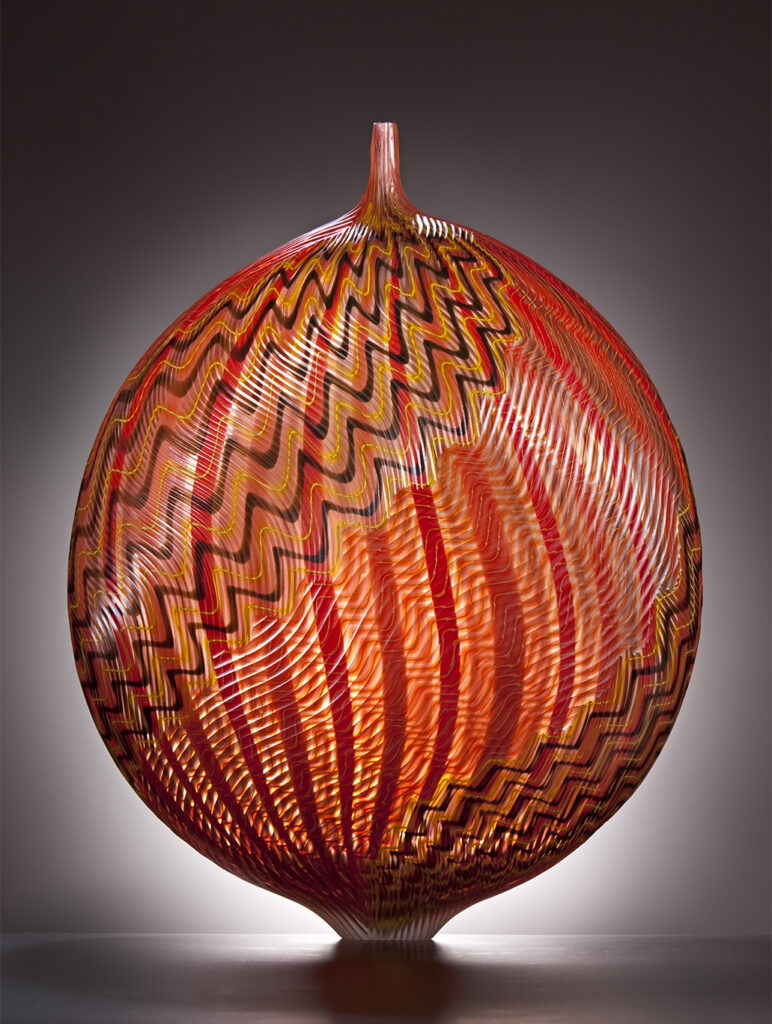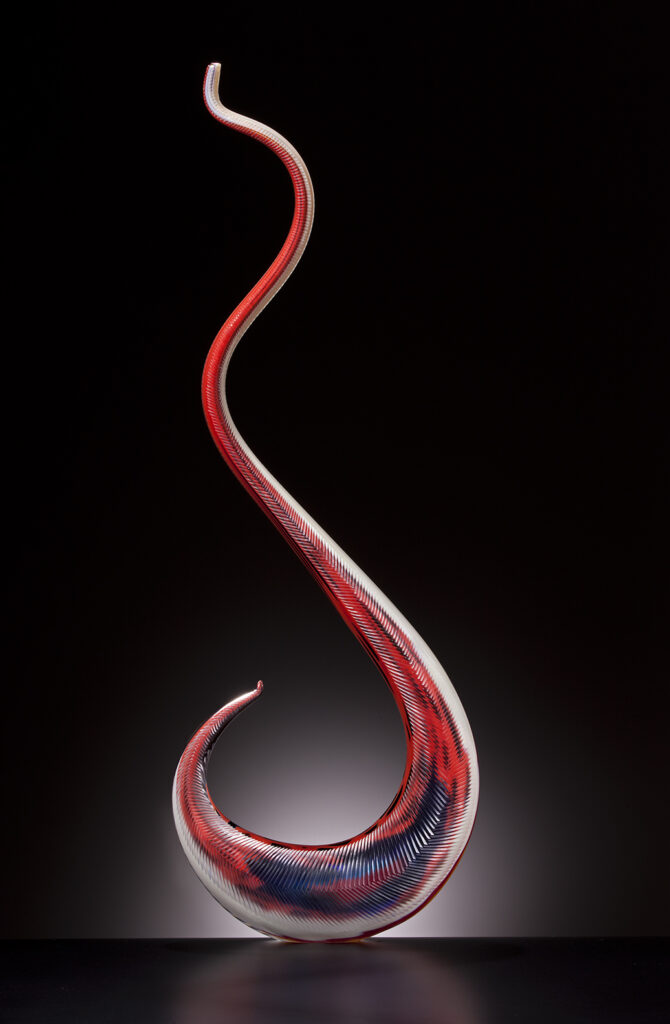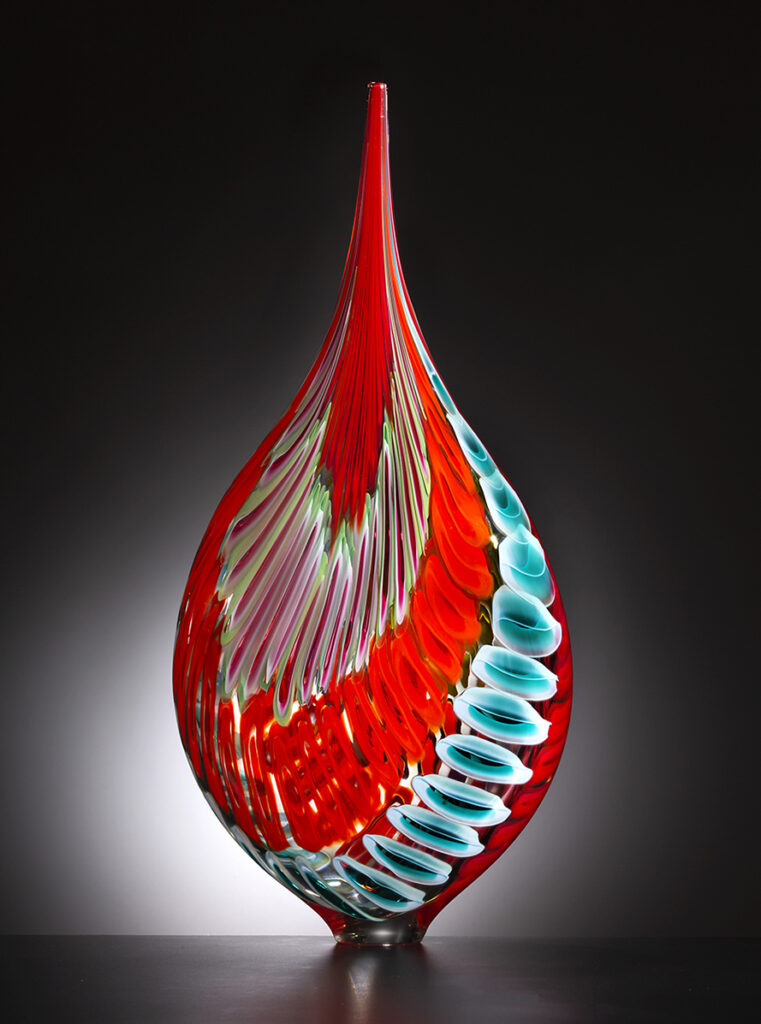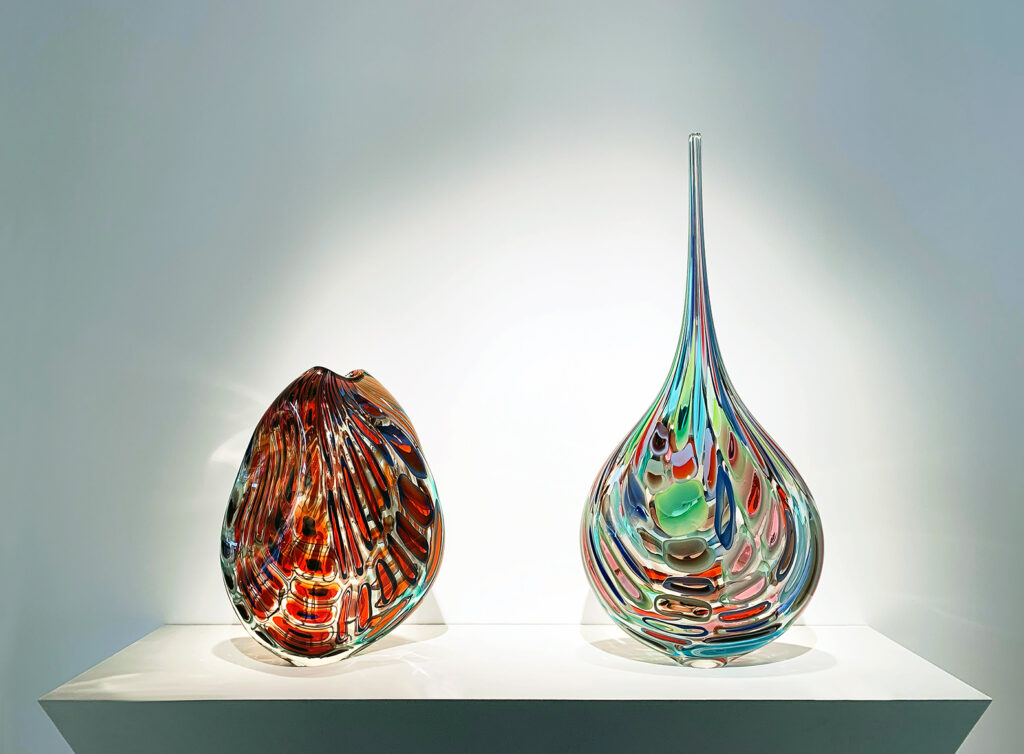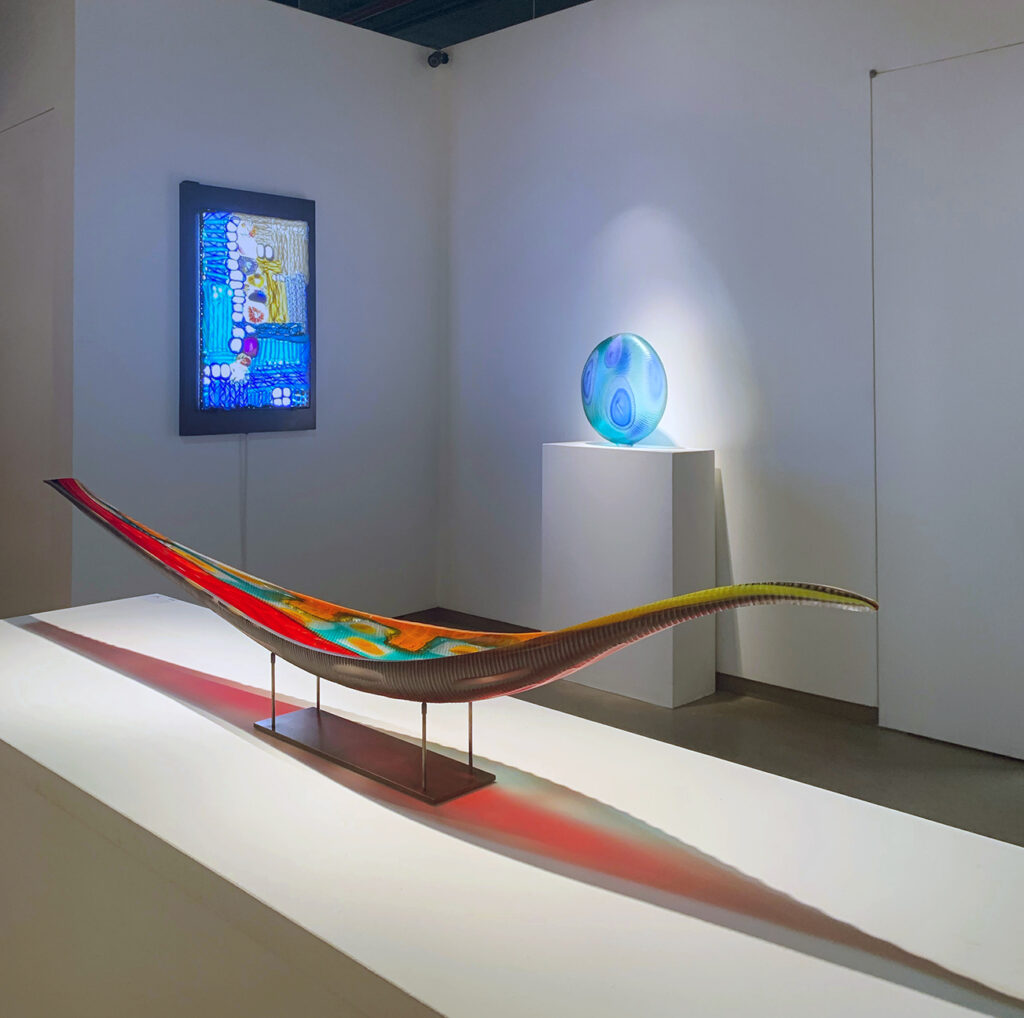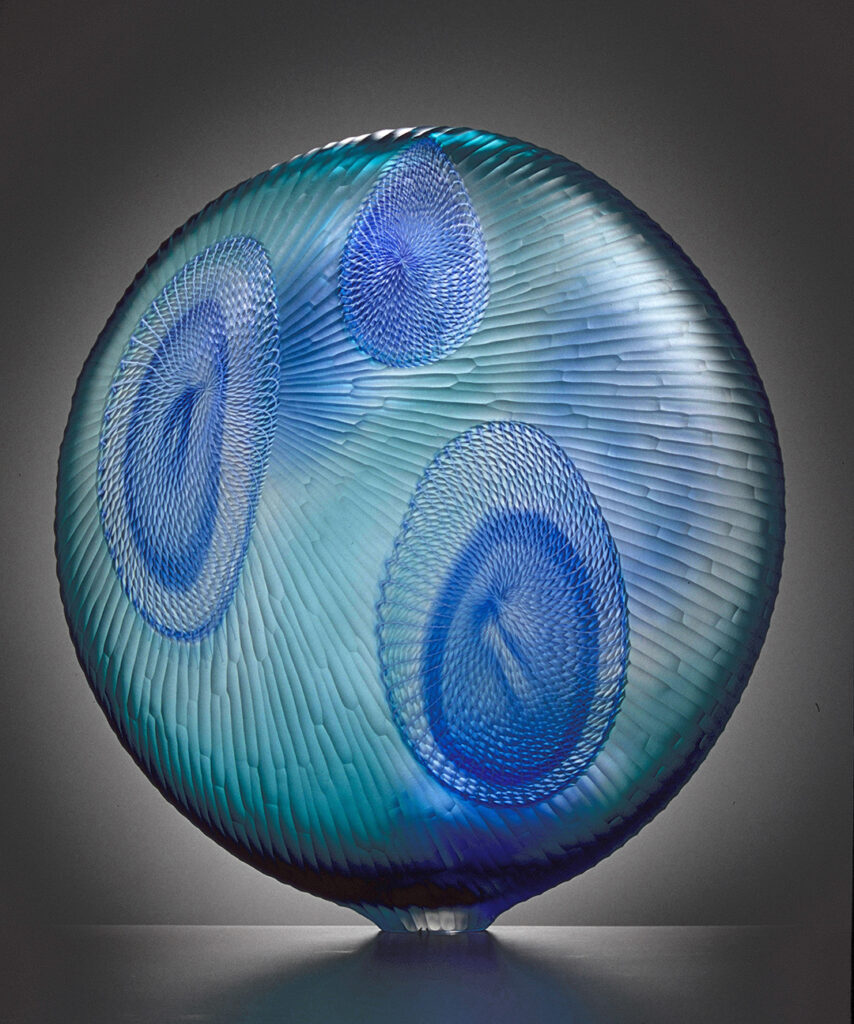
To those who know anything about art glass, Lino Tagliapietra (b. 1934) is known as ‘the maestro.’ A teacher, mentor, and artist, he is considered a “rock star” in the world of glass—the man who brought glass from its crafty position to the forefront of the world of contemporary art. Tagliapietra is not just the most admired technical virtuoso – considered the world’s best glassblower – but also as a creator of poetry in glass. He is credited with bringing traditional Venetian glass techniques to the 20th and 21st centuries and for spreading it throughout the world, making it the chief vocabulary in contemporary glass. In fact, for Tagliapietra, discipline and innovation are equally important. In his native Murano, however, he has often been considered a traitor, who disclosed the secrets of Venetian glass, but nevertheless, he has had an immensely notable career.
The new monographic show at Heller Gallery, presenting the wide breadth of Tagliapietra’s artistic creativity, is an important event in the world of art glass, and acknowledges his retirement at the age of 87. We were there this morning, visiting the show, to learn from Doug and Katya Heller, the husband-wife team who know more than anyone about the significance of Tagliapietra’s innovations and the personal stories behind the scene. He brought to the forefront the classical world of Muranese glassmaking, which had nearly vanished.
Tagliapietra’s biography is a legend and was related many times. He began making glass at the age of 12, and received the status of maestro at 21—a true genius. He rose to fame in the 70s, but the turning point came at age 45, when he met a young American glassblower named Benjamin Moore, who had come to Murano to work at Venini. Moore arranged for Tagliapietra to travel to the United States and to give a demonstration at the Pilchuck Glass School in Seattle, which, following this event, was to become the center of the glass movement in America. It was the beginning of a long collaboration, and at Pilchuck, he became the star, teaching Americans the traditional Venetian techniques. It is from his teachings that many of the best American glass artists, such as William Morris and Preston Singletary emerged. Tagliapietra brought to America Venetian professionalism and came to change the face of art glass, turning this country to the mecca of the contemporary studio glass movement in the 80s and 90s. He understood early on that the special spirit and passion in America can transform it into a great center for glass art, just like Venice in the 16th century and Bohemia in the 17th century—if and only if technical knowledge is mastered.
The exhibition at Heller Gallery is titled ‘Journey,’ as it comes to represent two decades out of 75 years of practice, while focusing on prime examples of new and archived works. Douglas Heller, the leading authority on contemporary glass, established the market for this medium, and his 48-year-old gallery is considered the temple of studio glass. This morning, we learned from him about Tagliapietra’s glass forms and their relationship to Italian design, about the bold colors and exuberant patterning, which ranges from murine, reminiscent of miniature fireworks displays, to the newest lozenge-shaped ‘aquilone’ (or kite) murine that have become the touchstone of his oeuvre. The exhibition will be open through November 6th, but if you miss it, you can see some of the pieces at the booth of Heller Gallery at the upcoming The Salon Art + Design. All images courtesy Heller Gallery.

